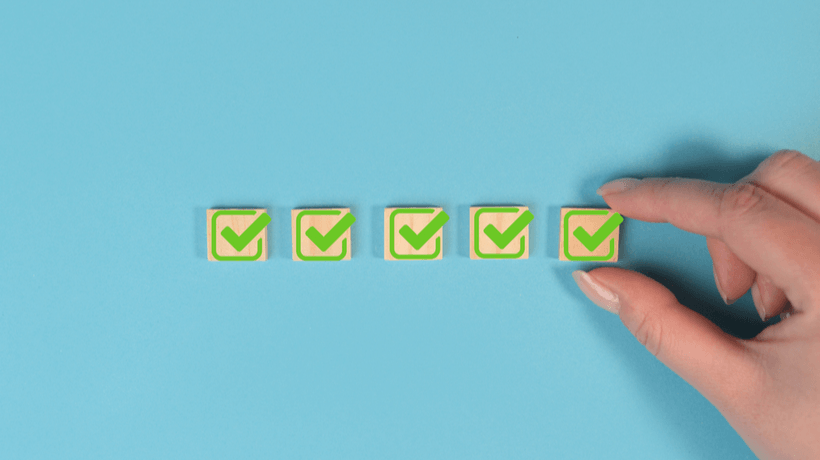
8 Tasks For Your LMS Implementation Checklist
Some people love to shop. Others see it as a necessary evil. Of course, when you’re shopping on behalf of your boss, workmates, or organization, there’s an extra layer of pressure. When the item you’re tasked with purchasing is software, you’re on the hook for implementation too. If anything goes wrong, you’re the one they’ll ask. So, set yourself up for success with a measurable checklist. Mapping out the process alleviates some of the stress while helping you look professional and competent. Below are 8 items that should be on your LMS implementation checklist.
1. Device Audits
This may not seem like a factor for LMS execution, but it’s key before purchase. Whatever learning management system you end up buying, you’ll want it to cut across. It should work with computers, laptops, tablets, and smartphones, and be represented in your office. If you can’t find a universal system, you may have to buy a new gadget for all your staff members. Or at least for the ones whose computers or devices are incompatible. While you’re at it, check the digital literacy levels of your team.
2. Mandatory Features
Once you know everyone can use the LMS you have in mind, think about the tasks you want it to do. Some LMSs have no authoring tools, while others lean too heavily toward content creation and sacrifice other key functions. If you sell directly to clients, you may want the ability to create quotations and invoices. You might even have a built-in payment portal for your eCommerce component. Do you want encrypted intranet messaging up for confidential texts and memos? Do you have external partners, franchisees, or telecommuters that require remote access? Type it all down.
3. Budget
The budgeting mistake lots of purchasing officers make is to start with a price point and work from there. This automatically cuts you off from hundreds of potentially good options. Don’t go to your finance team and ask for figures in a vacuum. Show them a list of features the organization requires. Type them into a search engine and come up with a shortlist of potential LMS candidates, with prices. Then, take this (price) list to your accountants and talk them into giving you a reasonable spending limit. Remember to factor in “hidden costs,” like licensing and tax.
4. Test Drive
Yes, your free trial should be part of your implementation list. This helps you take it more seriously instead of relegating it to a three-day last-minute rush. Based on your earlier list, design a testing team. Each of them should have a sub-list of features to explore, from user interface to mobile usability. If you’re testing multiple LMSs, have one person test the same feature on multiple software packs. That way, they’ll give a more informed comparative assessment. Set aside time for each tester to give their comprehensive evaluation report.
5. Project Team With Timelines
A testing team doesn’t have to be dismantled after you’ve settled on the LMS you all like. Assuming your testers are skill-based, they can continue in their roles. If you did it right, you drew reliable testers from relevant departments (IT, L&D, HR, admin, and some lay staff). These testers should now elevate their status to the implementation team. They can train colleagues on using the section they tested, now that they’re familiar with it. And for self-facing tasks (e.g., data migration for the IT team, or asset monitoring for admin), they have a head start.
6. LMS Implementation Timeframe
Your project team has now worked with an LMS for two sequential steps (testing and implementing). They’re best placed to tell you how long each stage will take, including the iffy figure of learning time. Yes, we all learn at our own pace and that’s the beauty of online training. But you still need an outer limit for the learning curve. Ensure your LMS execution team gives you one, preferably in writing, so you can check in and follow up.
7. Data Migration
A good LMS creates and disseminates training courses, but it also does a lot that’s not training-related. For example, an LMS can schedule usage of the boardroom and other shared assets. This means it’s loaded not just with training content but also with customer lists and staff profiles. Verify all data that needs to move to the new system. Get accurate duration estimates and put the right person in charge.
8. Content Creation
Finally, if training is a major LMS function, you’re not done until you’ve created and deployed at least one course. Start with something simple, ideally a course that uses existing content imports. The idea is to verify your LMS can really design courses and that trainees can study these courses effectively. It’s the last step in ensuring everything works as it should. So, build a short course and test it on your staff. After that, consider your LMS execution complete.
Getting Help With LMS Implementation
Not everyone uses to-do lists, but they can certainly be helpful. So, if you don’t want it looming over your head, you can use a different format, like notes on your calendar app or color-coded reminders on your phone, each with its own designated ringtone. Must-have activities include device audits, free trials, creating an implementation team, and assigning a budget. You need to set deadlines that include data migration, content creation, and training your team on using the new LMS. They have to get familiar with its tools and features before they sign up for courses or perform corporate tasks.
Not sure which LMS is best for your bottom line? Get an LMS consultation to find the ideal system for your needs and budget. You’ll receive a list of top choices based on your use case, project parameters, and estimated price range.
